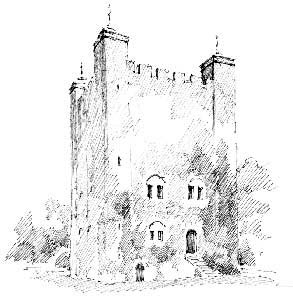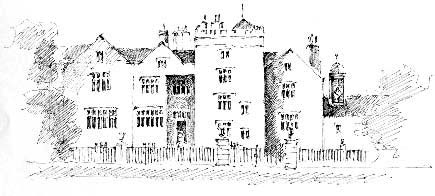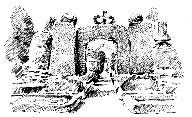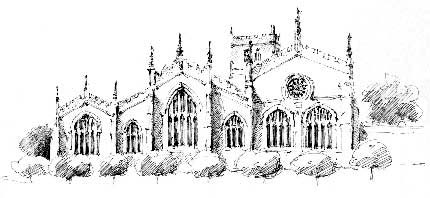Westmorland
ENGLAND’S BIGGEST HORSE FAIR
∗ SMALLEST COUNTY TOWN ∗ ENGLAND’S OLDEST TOPIARY
Appleby Castle, at the heart of England’s highest county town.
WESTMORLAND FOLK
Catherine Parr ∗ George Romney ∗ John Cunliffe ∗ Sir Arthur Eddington ∗ David Starkey
Appleby-in-Westmorland
THE BIGGEST HORSE FAIR IN THE WORLD takes place every year in June at APPLEBY-IN-WESTMORLAND, the former county town of Westmorland. The fair was established by charter from James II in 1685, and is held on the outskirts of the town at Fair Hill, originally known as Gallows Hill, which gives a small hint as to what went on there before. Gypsy horse traders and Romany families come together from all over the country to conduct their business, and during the fair horses can been seen everywhere in the town, tethered in the high street, trotting through the town centre or just grazing by the side of the road – creating an exhilarating, ‘wild west’ frontier town effect. Before being put up for sale, the horses are trotted or raced along Flashing Lane and then washed and spruced up by youngsters in the River Eden. Sales are usually sealed with a spit and a handshake.
Appleby-in-Westmorland is THE SMALLEST COUNTY TOWN IN ENGLAND, with a population of just 2,600. It used to be simply Appleby, but after local government reorganisation in 1974, when Westmorland was abolished as an administrative county, the ‘in Westmorland’ was added to ensure that the historic county name was not forgotten. Appleby has had as its MP two men who became Prime Ministers, William Pitt the Younger in 1783, the year he became the youngest ever Prime Minister, and Viscount Howick, who became Earl Grey. Ironically, it was Earl Grey’s administration that passed the Great Reform Act in 1832, which saw Appleby lose its Member of Parliament, the only county town to be so disenfranchised.
Appleby Grammar School occupies a notable place in American history, for amongst its roll-call of old boys are Lawrence and Augustine Washington, half-brothers of the first American President, George Washington. Lawrence would go on to build a fine house in Virginia, which he named Mount Vernon in honour of his commanding officer, English hero Vice-Admiral Edward Vernon, and which eventually became George Washington’s home.
APPLEBY CASTLE overlooks the town from behind its curtain wall at the top of the main street. The central keep was built around 1170 and is surrounded by a collection of medieval buildings that were restored in the 17th century by Lady Anne Clifford, who was responsible for preserving many homes and castles across the North.
Levens Hall
The gardens at LEVENS HALL, just south of Kendal, were laid out in 1694 by a French gardener called Guillaume Beaumont. He was already well known in England for his work at Hampton Court Palace and various other English gardens, but the gardens at Levens Hall are the only surviving example of his work. They are an extravagant riot of box, beech and yew, cut into extraordinary shapes, pyramids, columns and displays with names like the ‘Judge’s Wig’, the ‘Bellingham Lion’, and ‘Queen Elizabeth and her Maids of Honour’. One exhibit, the ‘Jugs of Morocco’, recalls a powerful ale that was imbibed at the convivial annual Radish Festival held at Levens Hall in May. Beaumont’s garden survives almost intact and boasts THE OLDEST AND MOST EXTENSIVE TOPIARY IN ALL ENGLAND.
Beaumont was commissioned by James II’s Keeper of the Privy Purse, Colonel James Grahame, who had won Levens Hall from a cousin, Alan Bellingham, in a game of cards. Apparently the game was won with an ace of hearts, and in recognition of this the down spouts of the guttering are decorated with gilded hearts.
The hall itself, a glorious Elizabethan house built around a 13th-century peel tower, is said to be haunted by a gypsy woman who was refused hospitality there. As she lay dying of starvation she put a curse on Levens, to the effect that ‘no son should inherit the house until the River Kent ceased to flow and a white fawn was born in the park’. And indeed, Levens Hall was passed down solely through the female line until 1896, when the river froze over, a white fawn appeared in the park and a male heir, Alan Bagot, was born to the owner Sir Josceline Bagot. Levens Hall is still the home of the Bagot family today.
Well, I never  knew this
knew this
about
WESTMORLAND FOLK
CATHERINE PARR, the sixth wife of Henry VIII, and the only one to survive him, was born in KENDAL CASTLE in 1512. Her prayer book, bound in silver, can be seen in the town museum.
The portrait painter GEORGE ROMNEY, who was born at nearby Dalton-in-Furness in 1734, had his first studio in Kendal, where he worked on his portraits of prominent Lakeland families. His name lives on in Romney’s Kendal Mint Cake, the Westmorland speciality.
KENDAL MINT CAKE was apparently invented in 1869 by Joseph Wiper, a Kendal confectioner, when he overcooked a recipe for glacier mints, containing glucose sugar and water, and the mixture started to ‘grain’ and become cloudy. When the liquid was poured out from the pan and cooled, mint cake was the result. Wiper set up a factory and began to market his secret recipe, which was an instant success, particularly as a source of energy for those climbing the Lakeland mountains. WIPER’S KENDAL MINT CAKE was supplied to Sir Ernest Shackleton’s Antarctic expedition of 1914–16.
ROMNEY’S, founded by another Kendal confectioner Sam T. Clarke, began making Mint Cake in 1918. ROMNEY’S KENDAL MINT CAKE was carried to the summit of Mt Everest in 1953 by the first men to conquer the world’s highest mountain, Sir Edmund Hilary and Sherpa Tensing. Tensing left some mint cake at the top to appease the mountain gods.
Kendal is Westmorland’s largest town. Holy Trinity Church, begun in the 13th century and added to in the 15th and 18th centuries, has five aisles and is ENGLAND’S WIDEST PARISH CHURCH, 103 ft (31 m) across.
LONGSLEDDALE, near Kendal, was the inspiration for Greendale, the setting for the postal round of the children’s television character POSTMAN PAT, and the old Beast Banks post office (now closed) in Kendal was the model for Greendale’s post office. Postman Pat’s creator, JOHN CUNLIFFE, lived in Kendal while writing the stories.
SIR ARTHUR EDDINGTON (1882–1944), astrophysicist, who introduced Einstein’s Theory of Relativity to the English-speaking world, was born in Kendal.
DAVID STARKEY, historian and TV presenter, was born in Kendal in 1945.







 knew this
knew this
